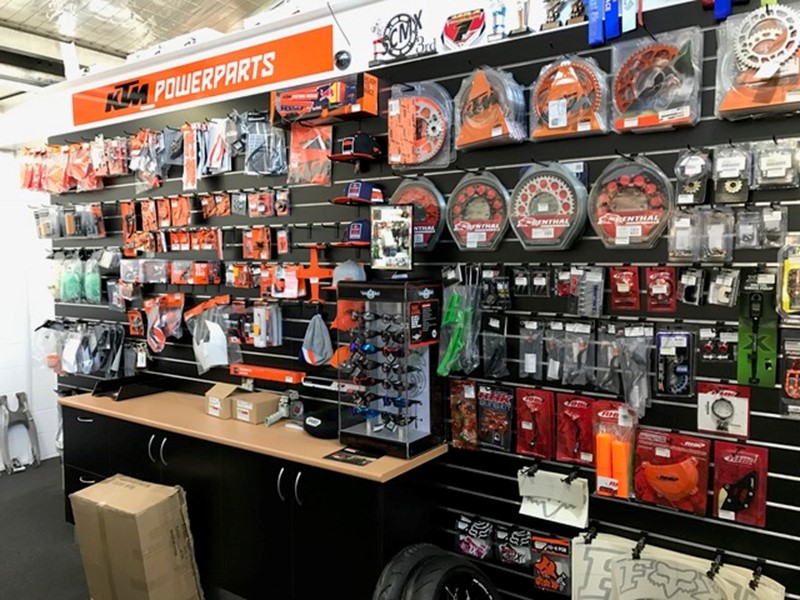Discover Quality Moto Parts NZ for All Your Motorcycle Demands
Discover Quality Moto Parts NZ for All Your Motorcycle Demands
Blog Article
Recognizing the Vital Parts of a Bike: A Comprehensive Guide for Enthusiasts
For bike fanatics looking to elevate their riding experience and guarantee their bikes run efficiently, recognizing the important elements of a motorbike is paramount. Each element, from the engine's intricate workings to the essential function of the braking systems, not only impacts efficiency yet also security and convenience.
Engine Components

The camshaft plays an important function in managing the timing of the engine's shutoffs, ensuring the exact opening and closing necessary for efficient fuel and air intake, along with exhaust expulsion. This timing is crucial to maintaining ideal engine performance and performance. Additionally, the carburetor or gas injection system, relying on the motorcycle model, is liable for mixing air with gas in the correct proportion for combustion.
The air conditioning system, either air or liquid-based, functions to keep the engine's temperature within operational limits, stopping getting too hot and making sure longevity - motorcycle parts nz. Each part, diligently designed and integrated, contributes to the seamless procedure of the engine, defining the motorbike's power output and overall efficiency
Transmission System
Indispensable to the motorbike's capability, the transmission system ensures efficient power transfer from the engine to the wheels. This system comprises several crucial components, consisting of the clutch, gearbox, and last drive, each playing an essential duty in equating the engine's power right into movement. The clutch, generally operated by a hand lever, offers to involve and disengage the engine from the transmission, permitting smooth gear adjustments and controlled velocity.
The gearbox, frequently described as the transmission proper, contains a collection of equipments that motorcyclists can by hand change via to readjust the bike's speed and torque outcome. These gears are organized in a sequence that enables the motorcycle to speed up smoothly and maintain optimum engine performance across numerous rates. Many bikes use a consecutive transmission, requiring the motorcyclist to move gears in a predetermined order.
Braking Systems
While understanding the transmission system is crucial to harnessing a bike's power, similarly important is the capability to manage and stop that power properly, which is where braking systems enter play. Brakes are important for safety and security and efficiency, providing the biker with the needed control to browse different terrains and problems. Generally, bikes feature two sorts of braking systems: disc brakes and drum brakes.
Disc brakes are much more widespread in contemporary motorcycles due to their exceptional efficiency. They consist of a brake disc, caliper, and pads. When turned on, the caliper presses the brake pads versus the spinning disc, converting kinetic power right into heat, consequently slowing down the wheel. This system uses better warm dissipation, regular efficiency, and improved motorcycle gloves stopping power, especially in damp problems.
Conversely, drum brakes, though much less usual, are still found in some motorcycles. They function by pressing brake shoes against the inner surface of a drum affixed to the wheel. While normally less efficient in warmth dissipation and stopping power, drum brakes are simpler and extra affordable.
Understanding these braking systems' nuances enables riders to keep their motorcycles effectively and value the engineering that makes certain safe and effective quiting.
Suspension and Guiding
Suspension and guiding systems are important elements that dramatically affect a motorcycle's handling and trip convenience. The shock absorber, containing forks at the front and shock absorbers at the rear, takes in road irregularities, enhancing security and control. Front forks, commonly telescopic or inverted, compress and rebound to minimize impacts, while rear shock absorbers preserve tire call with the roadway, crucial for traction and security.
Guiding, focused around the handlebars, attaches the biker to the bike's directional control. The guiding head bearings ensure smooth operation, allowing precise ability to move. Proper placement and maintenance of these bearings are essential for predictable guiding reaction and minimizing motorcyclist tiredness.
The suspension's adjustability is one more important element; preload, damping, and rebound settings allow personalization to match numerous riding styles and problems. This flexibility is crucial for enhancing performance, whether navigating urban streets or taking on tough tracks. Advancements like digital suspension systems offer real-time adjustments, improving ride quality across varied surfaces.

Electrical Solutions
After guaranteeing a smooth and regulated trip with reliable suspension and guiding systems, focus turns to the electric systems, a pivotal facet of modern bikes. These systems play an important duty not only in beginning the engine but also in powering different elements that improve the functionality and safety and security of the motorbike.
At the heart of a motorbike's electric system is the battery, which stores electrical Get More Info power essential for starting the engine and powering supporting systems - motocross gear. The alternator or generator, coupled with the rectifier-regulator, makes sure the battery remains charged while the motorbike is in operation, converting mechanical energy right into electric power and preserving voltage YOURURL.com degrees
The ignition system, an additional crucial part, is accountable for firing up the air-fuel mixture in the engine's cylinders. Modern bikes frequently utilize an electronic ignition system, supplying better effectiveness and integrity contrasted to standard systems.
Lights systems, consisting of headlights, tail lights, and indicators, are also vital, making sure presence and security for the biker. Added digital parts such as sensing units, control devices, and displays add to advanced features like gas shot administration, anti-lock stopping systems (ABDOMINAL), and electronic dashboards, better improving the riding experience.
Conclusion
A detailed comprehension of a motorbike's necessary elements, including the engine, transmission system, braking systems, suspension, steering, and electric systems, is essential for fanatics intending to optimize efficiency, security, and convenience. Mastery of these elements allows for informed decisions concerning maintenance and upgrades, inevitably boosting the riding experience. By integrating this understanding, bikers can guarantee their motorbikes run at peak performance and reliability, therefore making best use of both pleasure and long life of their vehicles.
For motorcycle lovers looking to elevate their riding experience and guarantee their bikes run smoothly, recognizing the crucial components of a motorbike is vital.Indispensable to the motorcycle's performance, the transmission system makes sure effective power transfer from the engine to the wheels.While understanding the transmission system is crucial to utilizing a motorbike's power, similarly crucial is the capability to manage and quit that power efficiently, which is where stopping devices come right into play. Typically, bikes feature two kinds of braking systems: disc brakes and drum brakes.
A thorough comprehension of a motorbike's crucial parts, consisting of the engine, transmission system, stopping mechanisms, suspension, guiding, and electric systems, is essential for lovers intending to enhance comfort, efficiency, and safety.
Report this page